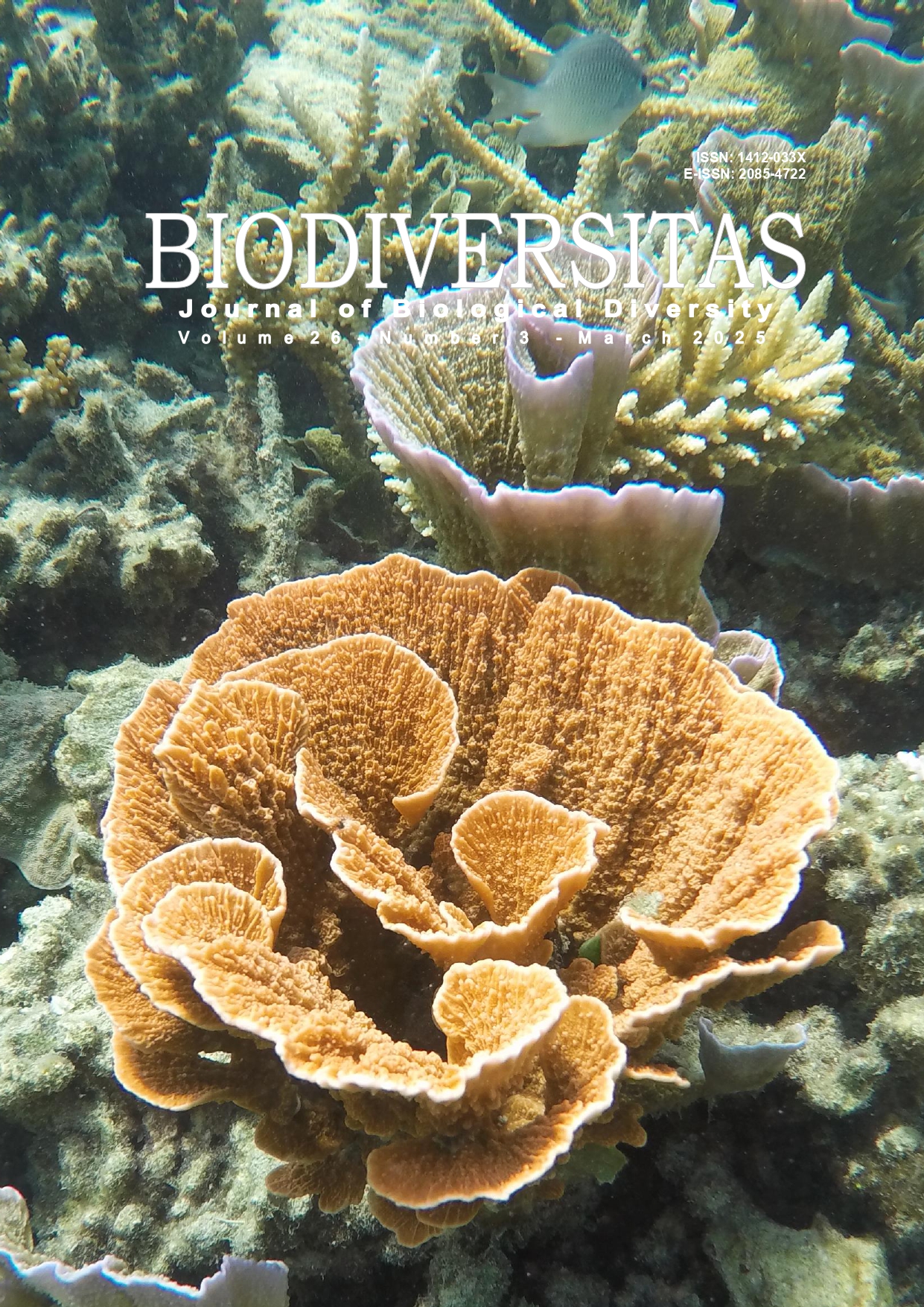Benthic macroinvertebrate variability as an indicator of aquatic health in the Bone River, Gorontalo, Indonesia
##plugins.themes.bootstrap3.article.main##
Abstract
Abstract. Kadim MK, Pasisingi N, Olii AH, Hertika AMS, Arfiati D, Yuli EH, Baderan DW, Suciyono. 2025. Benthic macroinvertebrate variability as an indicator of aquatic health in the Bone River, Gorontalo, Indonesia. Biodiversitas 26: 1247-1256. The Bone River in Gorontalo, Indonesia is at risk of pollution due to anthropogenic activities in the surrounding area. Macroinvertebrates serve as bioindicators of pollution based on their community characteristics, including sedentary behavior, limited mobility, and sensitivity to water quality. This study aims to assess macroinvertebrate communities and evaluate the water quality of the Bone River watershed using the Biological Monitoring Working Party-Average Score Per Taxon (BMWP-ASPT) biotic index. Macroinvertebrate community variability was examined across 12 observation stations. Sampling was conducted during periods of low river discharge and in the absence of precipitation. Observation stations were purposefully selected based on prevailing ecological conditions (preferably riffle areas) and potential contamination sources from land use activities. Macroinvertebrate samples were collected between April and August during the 2021-2023 period and were identified at the family level. A total of 7,456 individuals, representing 43 genera, were recorded, with Platybaetis, Cheumatopsyche, Chironomus, and Coxelmis being widely distributed along the river. Moderate diversity, a high evenness index, and the dominance index suggest that no single macroinvertebrate species dominates the community. The BMWP-ASPT values ranged from 3.08 to 6.77, indicating varying levels of pollution in the Bone River. The findings demonstrate a progressive decline in river health, with worsening conditions observed downstream over the study period.


 https://orcid.org/0000-0002-7858-4849
https://orcid.org/0000-0002-7858-4849